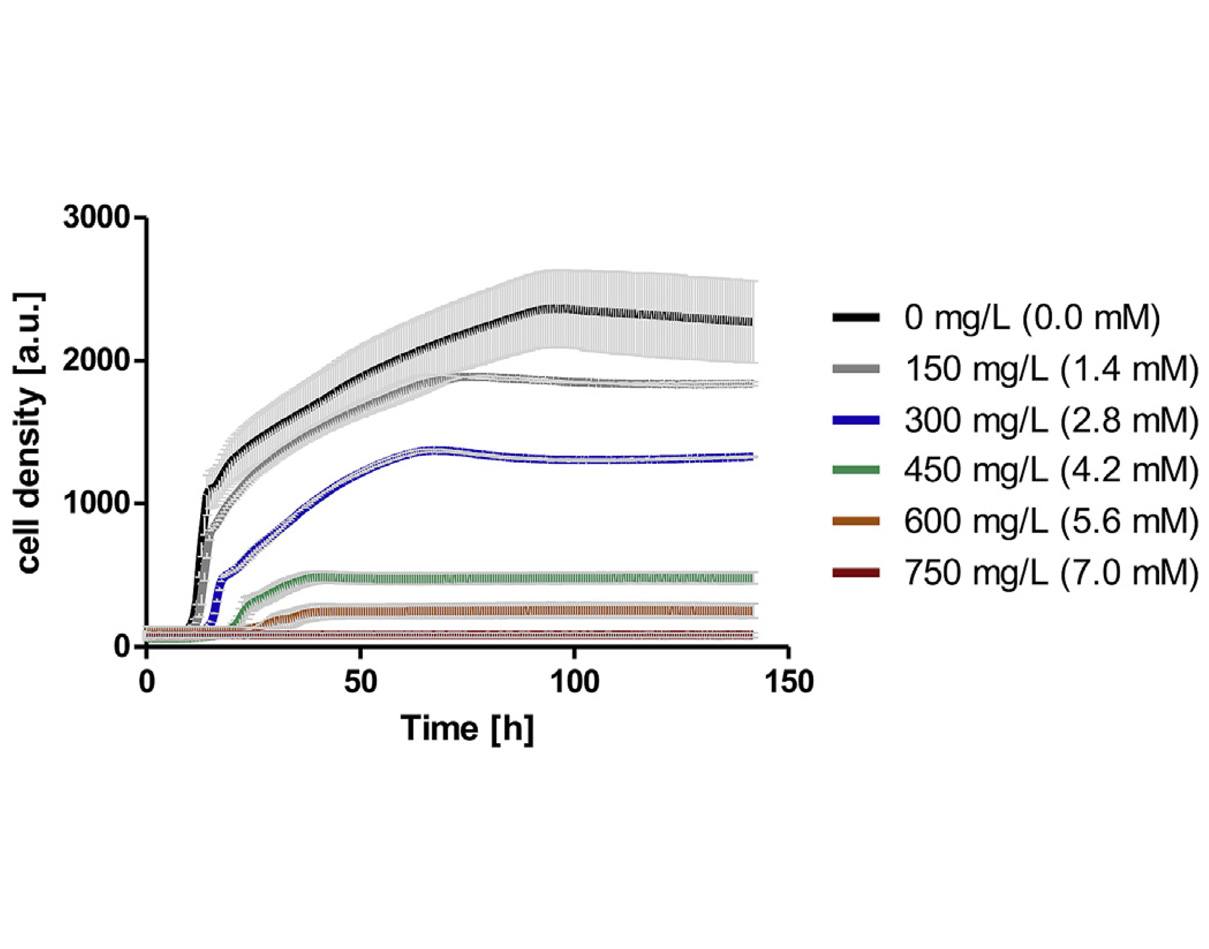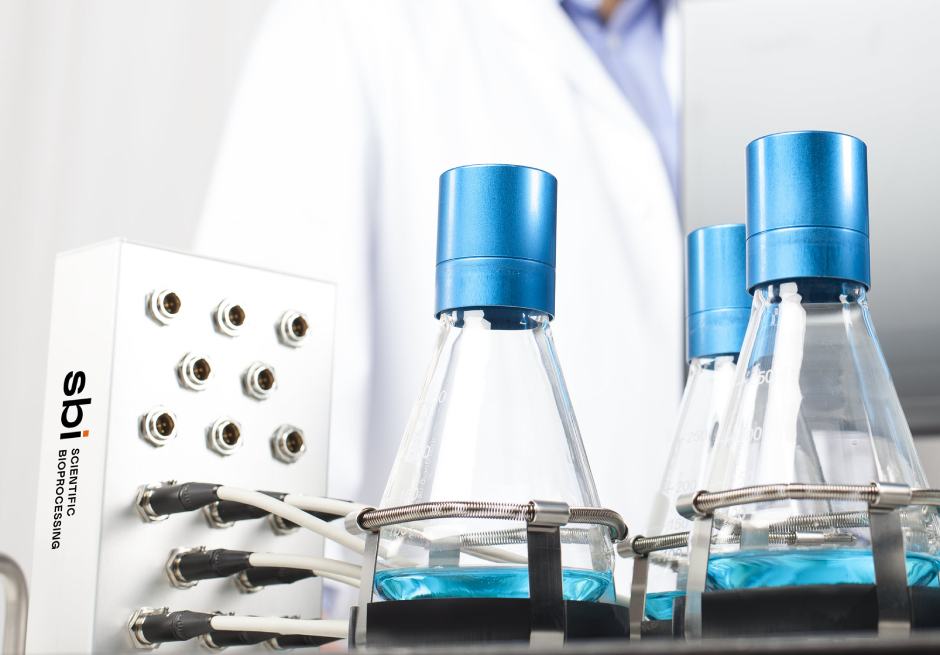Customer Success Story
Using The Cell Growth Quantifier (CGQ) For Toxicity Tests
Customer
Prof. Dr. Eckhard Boles, Physiology and Genetics of Lower Eukaryotes, Goethe University Frankfurt
Background
As a flavor and platform chemical, m-cresol (3-methylphenol) is a valuable industrial compound that is mainly synthesized by chemical methods from fossil resources at the moment. Cresols are utilized as disinfectants and antiseptic agents because of their antibacterial and antifungal properties and also act as antioxidants scavenging reactive oxygen species (ROS). In the publication mentioned above, the group of Eckhard Boles presented the first biotechnological de novo production of m-cresol from sugar
in complex yeast extract-peptone medium with the yeast Saccharomyces cerevisiae.
As many phenolic compounds display toxic effects on yeast cells already at low concentrations, an evaluation of the toxicity of m-cresol on S. cerevisiae had to be done before studying its biosynthesis from glucose. For this purpose, aquila biolabs’ Cell Growth Quantifier (CGQ) was an ideal tool: we added different concentrations of m-cresol to cultures of the wild type strain CEN.PK2–1C and followed the growth in YPD medium for 144 h by using the CGQ’s automated backscatter measurements. Already at the lowest tested m-cresol concentration of 150 mg/L growth of CEN.PK2–1C was slightly reduced. Growth rates were strongly reduced at concentrations of 450–600 mg/L and growth was completely prevented at 750 mg/L m-cresol (corresponding to 7 mM).
 Fig. 1 Toxic effects of m-cresol on growth of S. cerevisiae CEN.PK2–1C in YPD supplemented with different m-cresol concentrations. Cell densities (starting OD = 0.1) were followed over 144 h with the Cell Growth Quantifier (CGQ) and are depicted as arbitrary units (a.u.). Growth curves represent average of two biological replicates including standard deviations (light grey bars).
Fig. 1 Toxic effects of m-cresol on growth of S. cerevisiae CEN.PK2–1C in YPD supplemented with different m-cresol concentrations. Cell densities (starting OD = 0.1) were followed over 144 h with the Cell Growth Quantifier (CGQ) and are depicted as arbitrary units (a.u.). Growth curves represent average of two biological replicates including standard deviations (light grey bars).

Testimonial
“Our group has been using the Cell Growth Quantifier (CGQ) for roughly five years by now and even though we often use the device for screenings, it also is the perfect tool for toxicity tests: we were able to see the effect of different m-cresol concentration on the growth of S. cerevisiae CEN.PK2–1C with high resolution and without any time-consuming manual sampling required for offline OD growth curves.”
Dr. Julia Hitschler (University of Frankfurt)